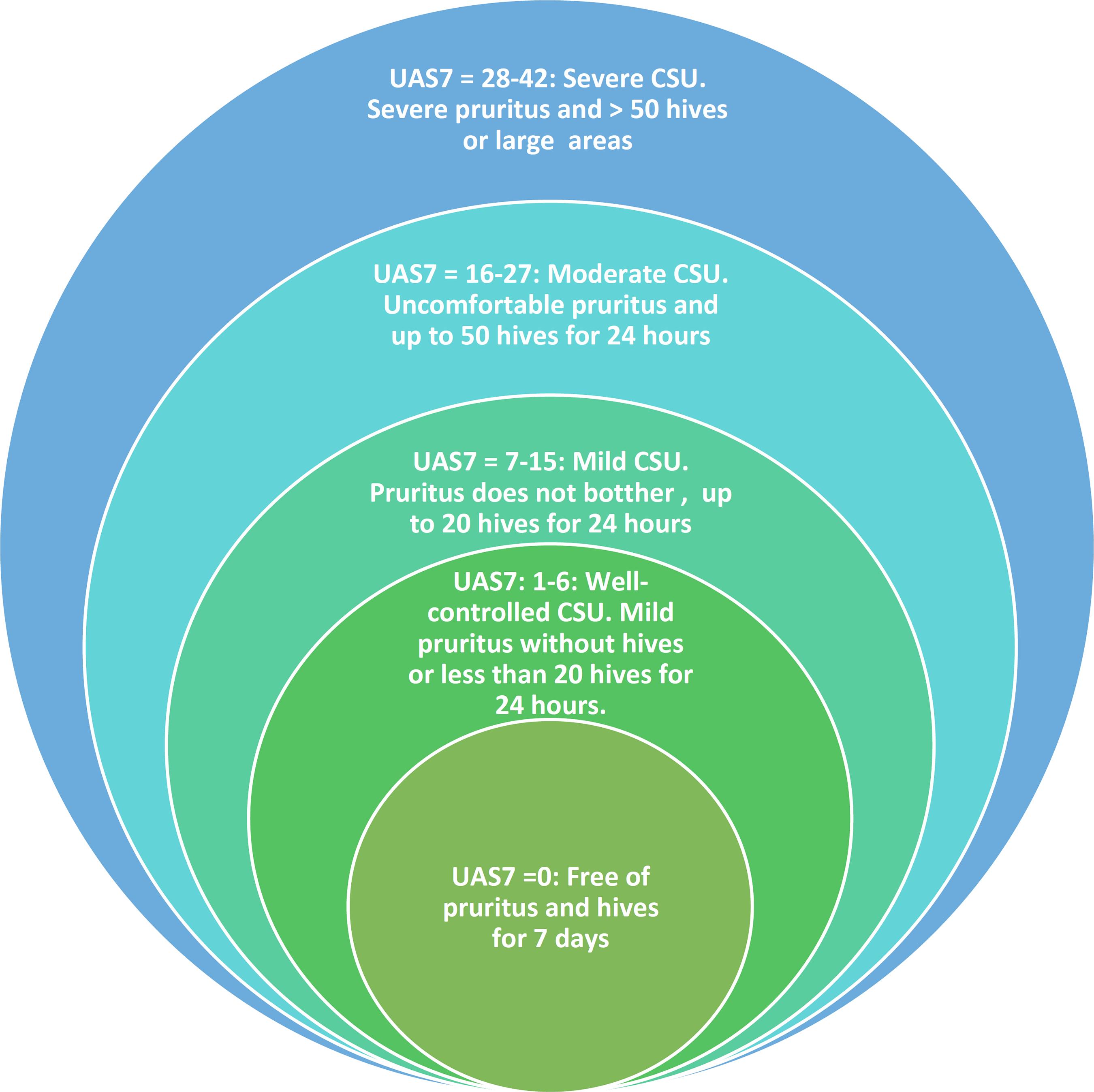Abstract:
Background:
Urticarias are frequent diseases, with 15% to 20% of the population presenting at least one acute episode in their lifetime. Urticaria are classified in acute ( ≤ 6 weeks) or chronic (> 6 weeks). They may be induced or spontaneous.
Objectives:
To verify the diagnostic and therapeutic recommendations in chronic spontaneous urticaria (CSU), according to the experience of Brazilian experts, regarding the available guidelines (international and US).
Methods:
A questionnaire was sent to Brazilian experts, with questions concerning diagnostic and therapeutic recommendations for CSU in adults.
Results:
Sixteen Brazilian experts answered the questionnaire related to diagnosis and therapy of CSU in adults and data were analyzed. Final text was written, considering the available guidelines (International and US), adapted to the medical practices in Brazil. Diagnostic work up in CSU is rarely necessary. Biopsy of skin lesion and histopathology may be indicated to rule out other diseases, such as, urticarial vasculitis. Other laboratory tests, such as complete blood count, CRP, ESR and thyroid screening. Treatment of CSU includes second-generation anti-histamines (sgAH) at licensed doses, sgAH two, three to fourfold doses (non-licensed) and omalizumab. Other drugs, such as, cyclosporine, immunomodulatory drugs and immunosuppressants may be indicated (non-licensed and with limited scientific evidence).
Conclusions:
Most of the Brazilian experts in this study partially agreed with the diagnostic and therapeutic recommendations of the International and US guidelines. They agreed with the use of sgAH at licensed doses. Increase in the dose to fourfold of sgAH may be suggested with restrictions, due to its non-licensed dose. Sedating anti-histamines, as suggested by the US guideline, are indicated by some of the Brazilian experts, due to its availability. Adaptations are mandatory in the treatment of CSU, due to scarce or lack of other therapeutic resources in the public health system in Brazil, such as omalizumab or cyclosporine.
Keywords:
Cyclosporine; Dapsone; Histamine antagonists; Methotrexate; Omalizumab; Urticaria; Urticaria/etiology; Urticaria/therapy


 Adaptaded from: Zuberbier, et al, 2018.
Adaptaded from: Zuberbier, et al, 2018. Adaptaded from: Zuberbier, et al, 2018.
Adaptaded from: Zuberbier, et al, 2018.